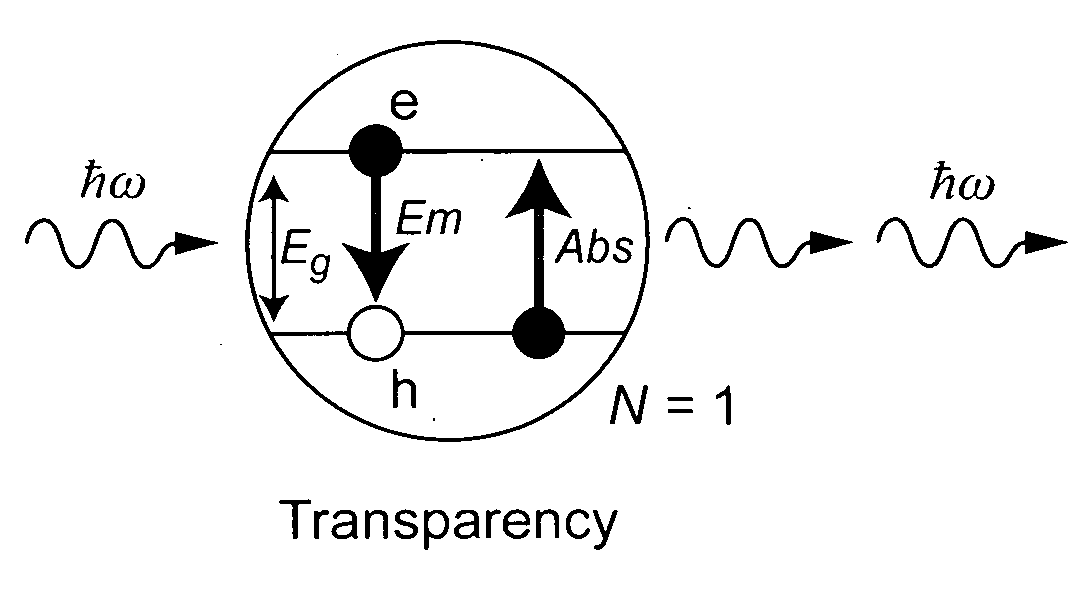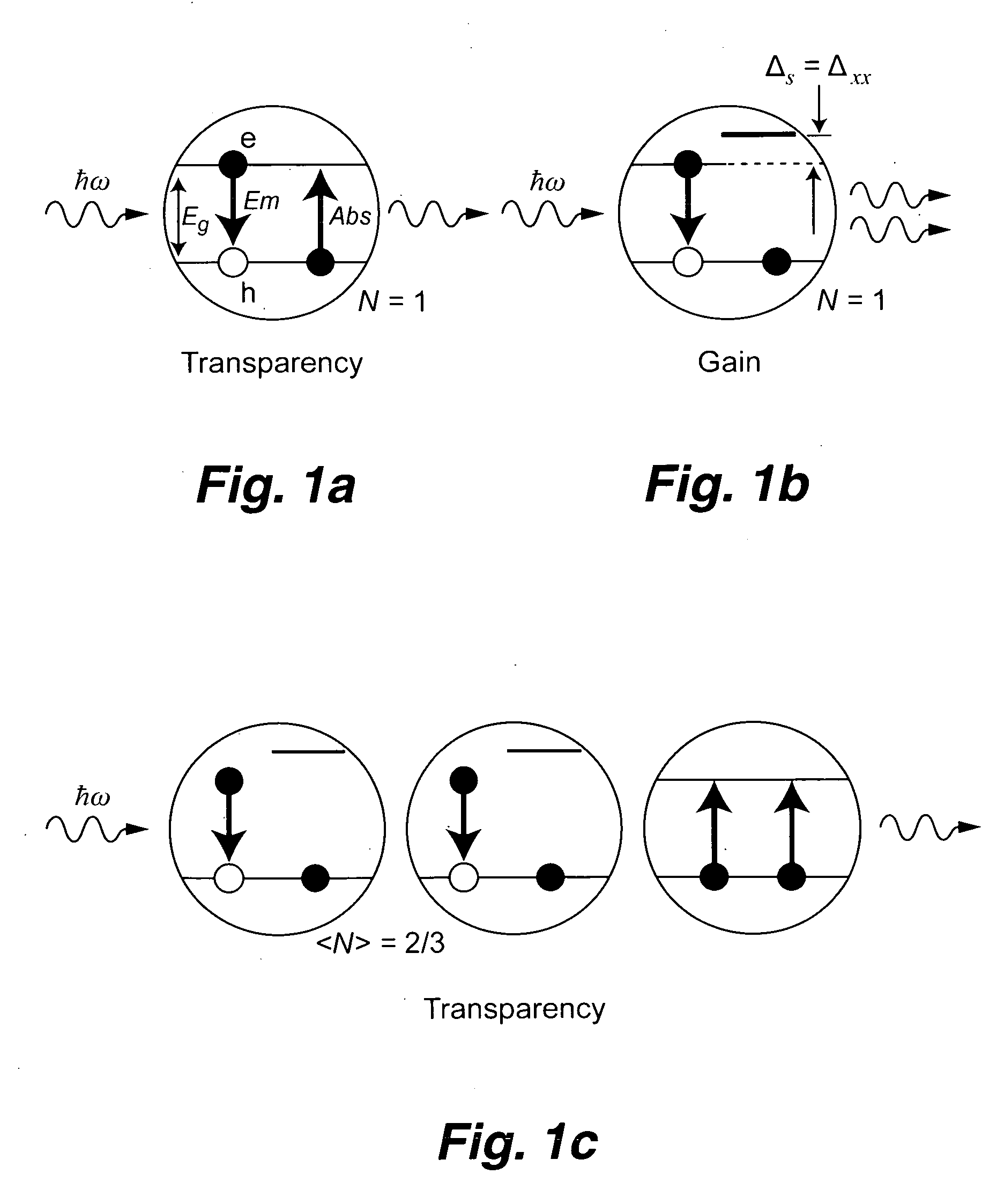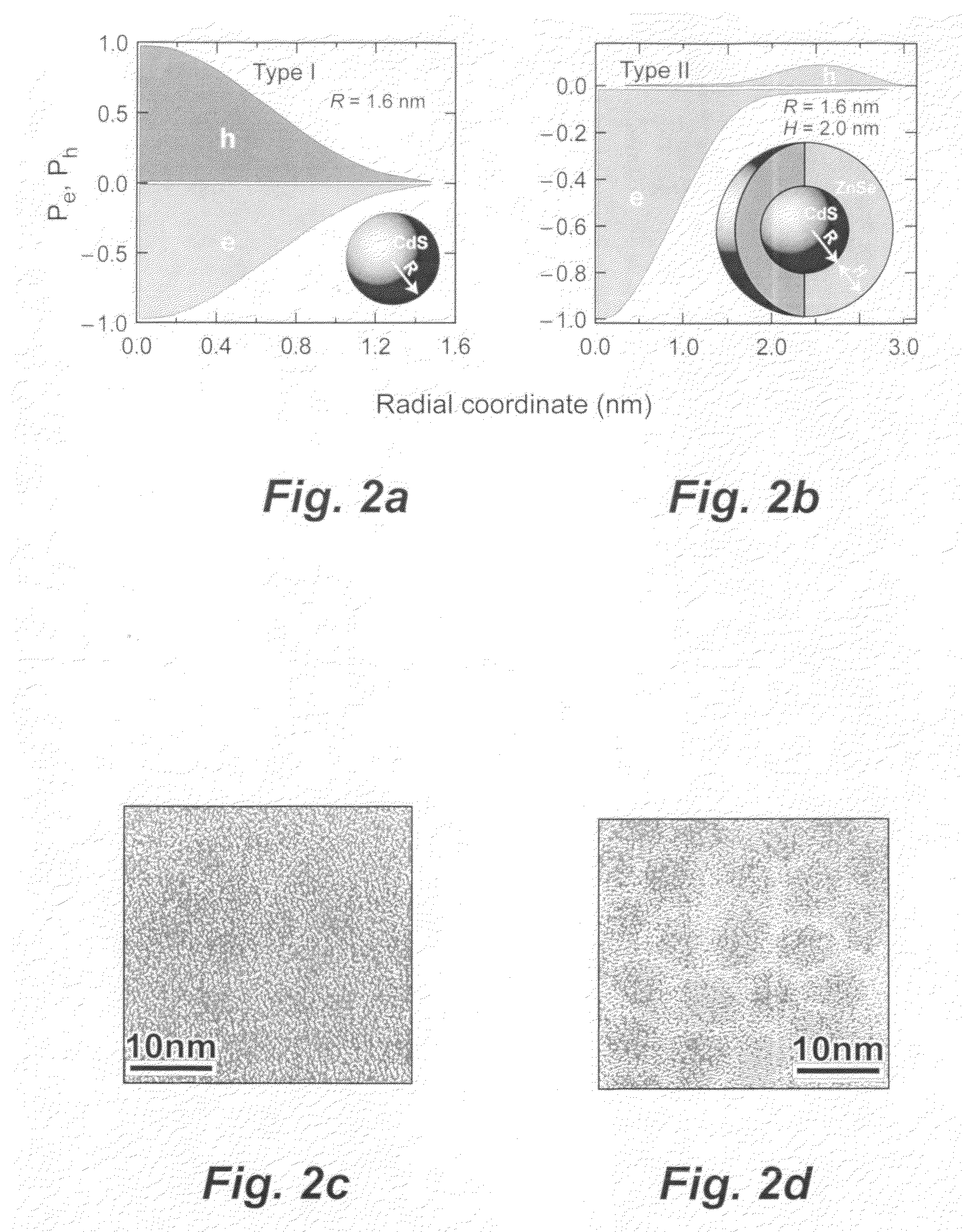Single-exciton nanocrystal laser
a nanocrystal laser and single-exciton technology, applied in the field of single-exciton nanocrystal lasers, can solve the problems of difficult use of nanocrystals in optical amplification and lasing, difficult use of ncs in lasing applications, and fast optical decay characterized by picosecond time scales
- Summary
- Abstract
- Description
- Claims
- Application Information
AI Technical Summary
Benefits of technology
Problems solved by technology
Method used
Image
Examples
example 1
[0039]Myristic acid (MA, 99.5%, Acros), tetraethylthiuram disulfide (TETD, 97%, Acros), 2,2′-dithiobisbenzothiazole (99%, Acros), Cd(AcO)2*2H2O (98%, Acros), Zn(AcO)2*2H2O (99%, Acros), ZnEt2 (98%, Strem), Se shot (99.9999%, Acros), tri-n-octylphosphine (TOP, 97%, Strem), anhydrous hexane (Aldrich), methanol (Aldrich), chloroform (Acros), toluene (Aldrich), and butanol (Aldrich) were used as purchased. Tri-n-octylphosphine oxide (TOPO, 90%, Fisher), hexadecylamine (HDA, 98%, Lancaster), octadecylamine (ODA, 90%, Acros), 1-octadecene (ODE, 90%, Acros), and oleic acid (OA, 90%, Aldrich) were used as is but were dried and degassed in vacuum for 2-3 hours at 120° C. shortly before use. All reactions were conducted under nitrogen atmosphere using the Schlenk technique.
[0040]Synthesis of type-II core / shell CdS / ZnSe nanocrystals was as follows. First, CdS nanocrystals were prepared as follows. Synthesis of highly monodisperse cubic CdS nanocrystals (NCs) was performed according to the rece...
example 2
[0044]CdS / ZnSe interface alloying was as follows. A further increase in the PL QY of CdS / ZnSe NCs can be obtained by alloying the core / shell interface with CdSe. In a typical alloying procedure, the Cd(AcO)2*2H2O solution in TOP was injected into the CdS NC solution in ODA / ODE prior to addition of the Zn / Se precursors. The amount of extra Cd(II) added to the solution was 1-10% of the molar amount of Zn(II) used in the subsequent shell deposition. Slight excess of Se / TOP (10-20%) compared to the total amount of added Cd(II) and Zn(II) was used. The rest of the procedure was the same as during the fabrication of the ZnSe shell. PL QYs of alloyed CdS / ZnSe NCs were as high as 30 to 35%.
PUM
 Login to View More
Login to View More Abstract
Description
Claims
Application Information
 Login to View More
Login to View More - R&D
- Intellectual Property
- Life Sciences
- Materials
- Tech Scout
- Unparalleled Data Quality
- Higher Quality Content
- 60% Fewer Hallucinations
Browse by: Latest US Patents, China's latest patents, Technical Efficacy Thesaurus, Application Domain, Technology Topic, Popular Technical Reports.
© 2025 PatSnap. All rights reserved.Legal|Privacy policy|Modern Slavery Act Transparency Statement|Sitemap|About US| Contact US: help@patsnap.com



